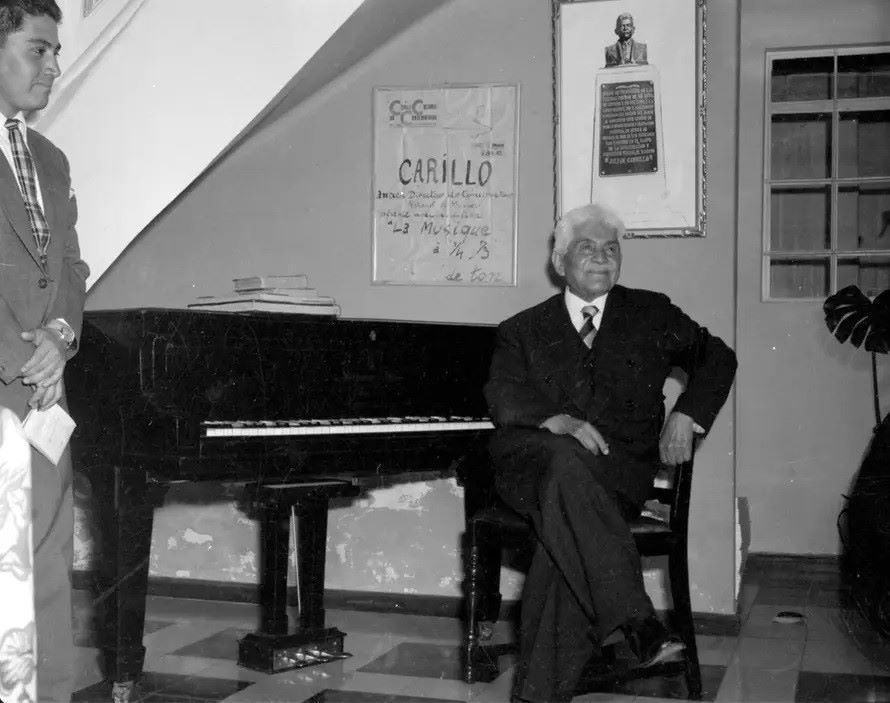Julián Carrillo and the Revolutionary Theory of Sonido 13
Discover the revolutionary theory of Sonido 13 by composer Julián Carrillo, who proved the existence of infinite sounds beyond the traditional twelve-tone system. Learn about his scientific approach to music theory and his lasting impact on contemporary music.

Julián Carrillo was a visionary composer, violinist, and music theorist born in San Luis Potosí, Mexico, in 1875. He became one of the most influential figures in Mexican music history, thanks to his groundbreaking theory of Sonido 13. The theory revolutionized traditional music and pushed the boundaries of musical composition to new limits.
The Origin of Sonido 13
For centuries, the traditional Western music system was based on the twelve-tone equal temperament, consisting of seven notes and five semitones. However, Carrillo challenged this notion and argued that there could be more than just twelve notes on a scale. He believed that music could be made more expressive and nuanced by using microtonal intervals that were not part of the traditional twelve-tone system.
Carrillo's theory of Sonido 13 was based on his belief that sound could be infinitely divided into smaller intervals or microtones. This meant that there was no limit to the number of sounds that could be created, allowing for an almost infinite range of tonal possibilities.
The Scientific Basis of Sonido 13
Carrillo's theory was not just mere speculation. He collaborated with physicist Sam Lutz to conduct a series of experiments that proved the existence of microtonal intervals beyond the traditional twelve-tone system. They used a machine called a monochord to measure and produce microtonal sounds.
Their experiments showed that there were intervals between notes that were smaller than a semitone. These intervals were so small that they were not perceptible to the human ear, but they were measurable using scientific instruments. Carrillo and Lutz discovered that by using these microtonal intervals, they could create new and unique tonalities that were not possible with the traditional twelve-tone system.

The Legacy of Sonido 13
Carrillo's theory of Sonido 13 had a profound impact on the world of music. It challenged the traditional Western music system and opened up new possibilities for musical expression. Carrillo's work inspired a new generation of musicians and composers to explore the use of microtonal intervals in their compositions.
In addition to his theoretical work, Carrillo also invented new instruments that were specifically designed to play microtonal music. He created a microtonal piano, a microtonal harp, and other instruments that were capable of playing sounds beyond the traditional twelve-tone system. His inventions earned him several awards, including the gold medal at the Brussels International Exhibition in 1957.
Carrillo's legacy continues to inspire musicians and composers to this day. His theory of Sonido 13 has influenced many contemporary musicians who incorporate microtonal intervals into their compositions. In recent years, there has been a resurgence of interest in microtonal music, and Carrillo's work has become more relevant than ever.
Conclusion
Julián Carrillo was a musical visionary whose theory of Sonido 13 challenged the traditional Western music system and opened up new possibilities for musical expression. His work has inspired generations of musicians and composers, and his legacy continues to influence contemporary music today.
Carrillo's scientific approach to music theory was groundbreaking and earned him international recognition. His invention of microtonal instruments and his experiments with sound have made him a significant figure in the history of music.
Although Carrillo's theory of Sonido 13 was met with resistance during his lifetime, it has since become an essential part of music theory and practice. As the world of music continues to evolve, Carrillo's legacy will continue to inspire and influence musicians for generations to come.




